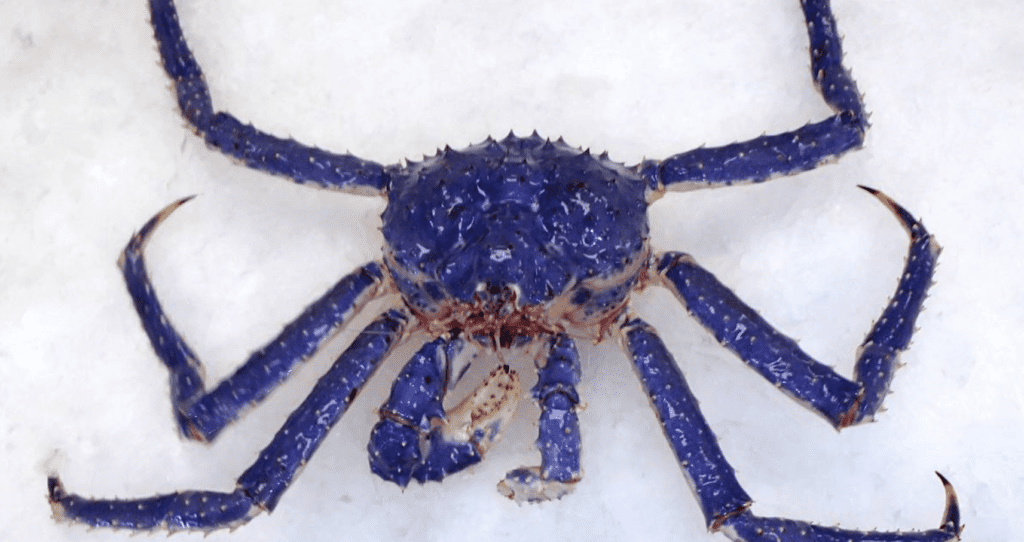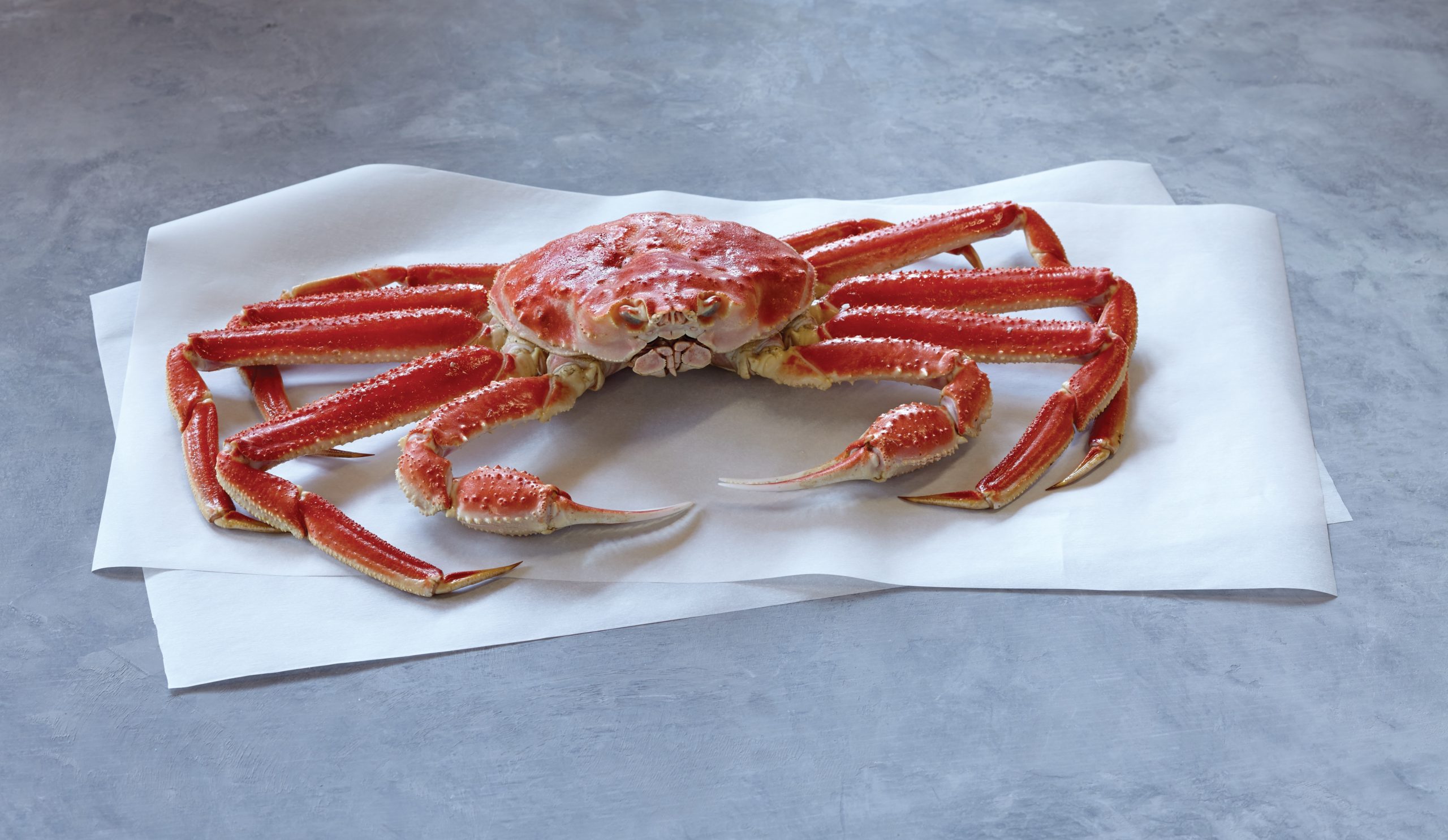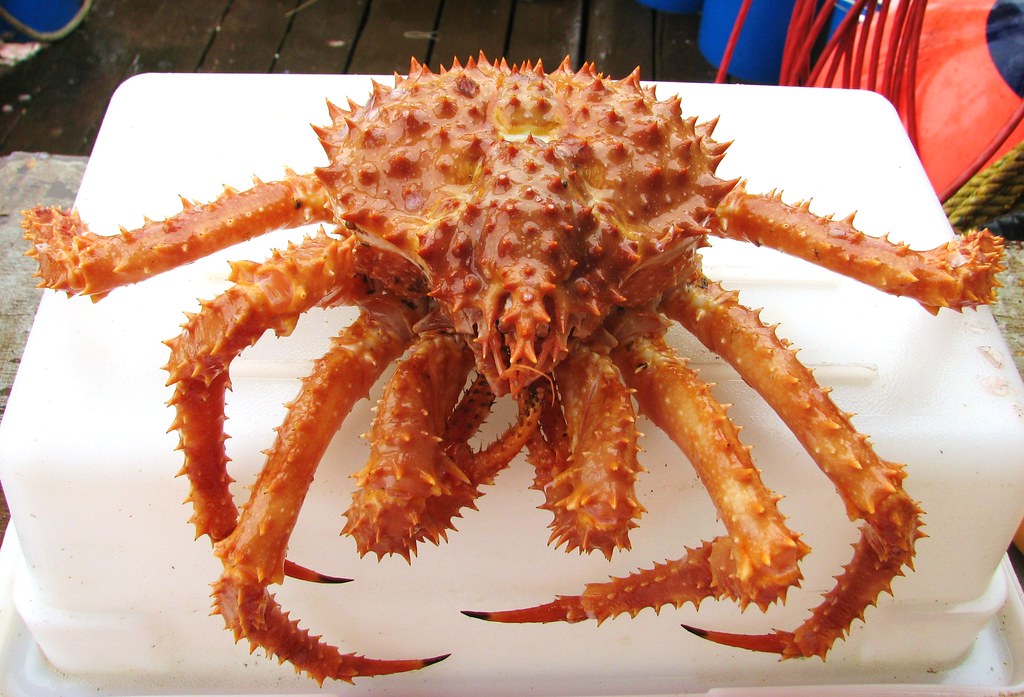Crab is a delicacy that many seafood lovers enjoy. However, not all crabs are created equal, and some are more expensive than others. In this article, we will explore the top 8 most expensive types of crab.
From the snow crab to the red king crab, we will take a closer look at these luxurious crustaceans and what makes them so special. Whether you’re a seafood enthusiast or just curious about the world’s most expensive crabs, this article will provide you with all the information you need.
You are reading: Discover The Top 8 Most Expensive Types Of Crab

Discover The Top 8 Most Expensive Types Of Crab
Snow Crab

Snow crab, also known as opilio crab or opies, is a species of crab that is predominantly found in the northwest Atlantic Ocean and north Pacific Ocean. They have equally long and wide carapaces, or protective shell-coverings, over their bodies.
Snow crabs have hooked setae, which are rigid, yet springy, hair-like organs on their claws. They are iridescent and range in color from brown to light red on top and from yellow to white on the bottom, and are bright white on the sides of their feet.
Snow crabs are native to the Northwest Atlantic and the North Pacific, and are caught as far north as the Arctic Ocean, from Newfoundland to Greenland and north of Norway in the Atlantic Ocean, and across the Pacific Ocean, including the Sea of Japan, the Bering Sea, the Gulf of Alaska, Norton Sound, and even as far south as California for Chionoecetes bairdi.
Snow crab is named for its meat, which turns from red to snowy white when cooked and boasts a sweet, subtly briny flavor. The texture is firm and slightly flaky.
Golden King Crab

Golden king crab, also known as brown king crab, is a species of king crab native to the North Pacific.
Here are some key facts about golden king crab:
– Golden king crabs are primarily found in the Aleutian Islands and waters nearer to Alaska and British Columbia, with a less dense population in the Russian far east and Japan.
– They are the smallest of the three commercially viable Alaskan king crab species, with an average weight between 5 and 8 lbs (2.3 – 3.6 kg) .
– Golden king crabs have five pairs of legs, with the front pair carrying their claws. They have long, spiny legs and their shells are mostly made of calcium, which gives them an orange-brown to golden hue.
– Compared to blue and red king crabs, golden king crabs are notably smaller, with thinner legs.
– The meat of golden king crab is sweet, succulent, and has a rich flavor, but is not as heavy and rich as other king crab species.
Golden king crab is a popular seafood delicacy, prized by local fishermen and seafood enthusiasts alike.
Dungeness Crab
Read more : Discover The Types Of Rattlesnakes In North Carolina
Dungeness crab is a species of crab that inhabits the west coast of North America, from Alaska to Mexico.
Here are some key facts about Dungeness crab:
– Dungeness crab typically grows to 20 cm (7.9 in) across the carapace.
– They are named after Dungeness Spit, a shallow bay in Washington state where they are commonly found.
– Dungeness crab is the most commercially important crab in the Pacific Northwest and western states of the US.
– The meat of Dungeness crab is sweet, tender, and has a slightly nutty flavor.
– Dungeness crab is a popular seafood delicacy and is often served in restaurants and at crab feeds.
If you want to cook and clean your own fresh Dungeness crab at home, you can follow the steps provided in the search results. Dungeness crab is a delicious and healthy seafood option that is enjoyed by many seafood enthusiasts.
Stone Crab
Stone crab is a type of crab found in the western North Atlantic, from Connecticut to Colombia, including Texas, the Gulf of Mexico, Belize, Mexico, Jamaica, Cuba, The Bahamas, and the East Coast of the United States.
Here are some key facts about stone crab:
– The stone crab’s carapace is 125 to 165 mm (5 to 6+1⁄2 in) wide. They are brownish-red with gray spots and a tan underside, and have large and unequally sized chelae (claws) with black tips.
– Stone crabs can be found in 15–90 cm (1⁄2–3 ft) deep holes near dock pilings in water 30–150 cm (1–5 ft) deep. Oftentimes the hole will have shells around the opening; the crab uses the shell as a digging tool for the hole construction.
– The bodies of stone crabs are relatively small and so are rarely eaten, but the claws (chelae), which are large and strong enough to break an oyster’s shell, are considered a delicacy.
– Stone crabs are a sustainable source of seafood, as only the claws are harvested, and they must be at least 2¾” in length. Crabbers are very protective of stone crab, but this especially applies to females because of their incredible reproductive power. One female stone crab can produce millions upon millions of eggs throughout their lifetime.
– Stone crab is a popular seafood delicacy, and is often served in restaurants and at crab feeds.
If you want to learn more about stone crab, you can visit the Florida Fish and Wildlife Conservation Commission website, which provides general information about stone crab, including its habitat, diet, and reproduction.
Horsehair Crab
Horsehair crab, also known as kegani, is a species of crab that is found mainly in the Northwest Pacific, around the Hokkaido coast in the Sea of Okhotsk and the Western Bering Sea.
Here are some key facts about horsehair crab:
– Horsehair crab is an important commercial species used in Japanese cuisine, and is known for its sweet and firm meat, as well as for the flavorful kani miso (roe).
– The catch for horsehair crab reached a peak in the 1950s at 27,000 tons and has decreased since, reaching 2,000 tons in 2003.
– Horsehair crabs are primarily harvested from the Pacific Ocean surrounding Hokkaido, the northernmost island of Japan.
– The size of horsehair crabs can make them somewhat trickier to eat, but their compactness provides dense, delicious meat with a firm texture and exceptional sweetness.
– Horsehair crab is often sold pre-boiled for easy consumption, and can be enjoyed as sashimi or in a variety of dishes.
If you want to try horsehair crab, you can order it online from various Japanese seafood retailers.
Blue King Crab
Blue king crab, also known as Paralithodes platypus, is a species of king crab found in the North Pacific Ocean and adjacent seas.
Here are some key facts about blue king crab:
– Blue king crabs are generally smaller than red king crabs, but are still among the largest crabs in the world, with some individuals exceeding 18 pounds (8.2 kg) in weight.
– Blue king crabs are found in the Bering Sea, near St. Matthew Island, the Pribilof Islands, and the Diomede Islands in Alaska, as well as along the coasts of Japan and Russia.
– Blue king crabs have a more northerly distribution compared to red king crabs, due to the colder waters of the northern Bering Sea.
– The meat of blue king crab is slightly sweeter and more mild than other king crabs, making it a popular seafood delicacy.
– Blue king crab legs are long but generally not quite as thick as true red king crab legs, and can be slightly lighter with more dark highlights.
– Blue king crab is a highly valued seafood item, with online prices ranging from $60 to $70 per pound for king crab legs.
Read more : The Top 9 Animals With The Shortest Lifespan
If you want to try blue king crab, you can order it online from various seafood retailers.
Coconut Crab
Coconut crab, also known as robber crab or palm thief, is the largest terrestrial arthropod known, with a weight of up to 4.1 kg.
Here are some key facts about coconut crab:
– Coconut crabs are found across the Indo-Pacific, from islands off the coast of Africa near Zanzibar to the Gambier Islands in the Eastern Pacific Ocean.
– They are typically found in coastal forests with plenty of rock crevices and soil for digging burrows.
– Adult coconut crabs feed primarily on fleshy fruits, nuts, seeds, and the pith of fallen trees, but they will eat carrion and other organic matter opportunistically.
– Coconut crabs are known for cracking into green coconuts to feast on the white flesh inside.
– Coconut crabs are generalist scavengers that feed on fallen fruit, carrion, and the shells of other crabs.
– The largest coconut crabs can exert a force of 3,300 newtons (about 742 pound-force) with their pincers.
– Coconut crabs are hunted extensively for food, which can be problematic due to their long lifespan and slow growth rate.
– They can live to be over 60 years old.
Coconut crab is a popular seafood delicacy in some parts of the world, but it is also a protected species in some areas due to over-harvesting.
Red King Crab
Red king crab, also known as Kamchatka crab or Alaskan king crab, is a species of king crab native to the Bering Sea and Gulf of Alaska.
Here are some key facts about red king crab:
– Red king crabs are the largest species of king crab, with a leg span of up to 5.9 feet (1.8 m) and a weight of up to 28 pounds (12.7 kg).
– They are heavily targeted by fisheries, and are a highly valued seafood item due to their sweet and succulent meat.
– Red king crabs are found in the North Pacific Ocean and adjacent seas, from Alaska to Japan.
– Red king crabs have five pairs of legs, with the front pair carrying their claws. They have a distinctive burgundy color when alive, but turn bright red when cooked.
– Red king crab is a smart seafood choice because it is sustainably managed and responsibly harvested under U.S. regulations.
– The Bristol Bay red king crab stock has shown a trend of increasing abundance since the late 1990s, and the Pribilof Islands, Norton Sound, and Bristol Bay stocks are not overfished.
If you want to try red king crab, you can order it online from various seafood retailers.
FAQS
1. Why are these crabs so expensive?
The price of these crabs varies depending on factors such as availability, location, and demand. Some of these crabs are rare or difficult to catch, which drives up the price. Additionally, some of these crabs are considered a delicacy and are in high demand.
2. Where can I find these crabs?
The availability of these crabs depends on their native habitat and the time of year. Some of these crabs are found in specific regions, while others are more widely distributed. You can order some of these crabs online from various seafood retailers.
3. How do I cook these crabs?
The cooking method for these crabs varies depending on the type of crab and the recipe you are using. You can find cooking instructions and recipes online or in seafood cookbooks.
4. Are these crabs sustainable?
Some of these crabs are sustainably managed and responsibly harvested under U.S. regulations. However, overfishing and habitat destruction can threaten the sustainability of these species. It is important to choose seafood that is sustainably sourced to protect the health of our oceans.
5. What do these crabs taste like?
The taste of these crabs varies depending on the type of crab and the cooking method. Generally, these crabs have a sweet and succulent flavor, with a firm and slightly flaky texture. Some of these crabs are considered a delicacy due to their unique flavor and texture.
Source: https://petstutorial.com
Category: Animals










